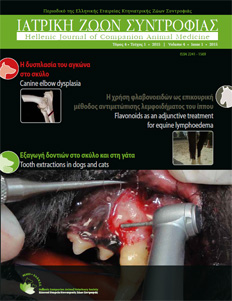Scientific revolutions and companion animal surgery
In philosophy of science, according to Kuhn*, at times of scientific crisis a revolution starts or an overturn appears, in many cases sharp and forcible; the aim, to introduce a novel working «paradigm», like a set of techniques, values and consolidated knowledge that scientific community espouses at that point in time. This new «paradigm» will collide with the dominant one resulting in the evolution of science since the dominant one is in crisis and does not satisfy the scientific community anymore. The progress, or better the evolution of surgery is not attributable to the accumulation of knowledge, theories and experiences and neither correlates with empirical knowledge. However, it is not only based on the continuous succession of “paradigms” but also interacts with and depends on the developments in society, history of surgery and even on metaphysical ideas. At any time period, surgical knowledge stands alone, is autonomous and can’t be assessed using current scientific criteria.











 PDF Download
PDF Download